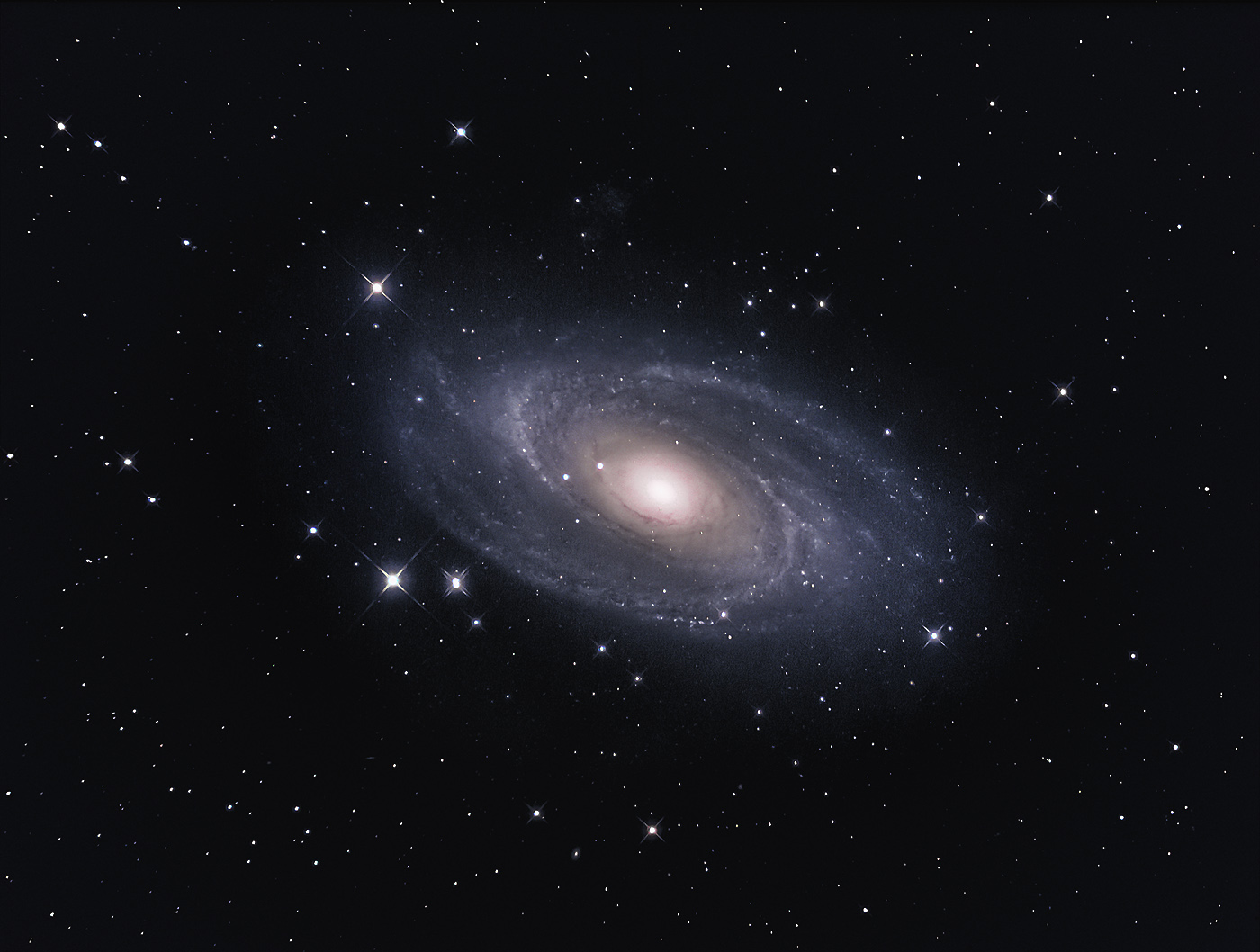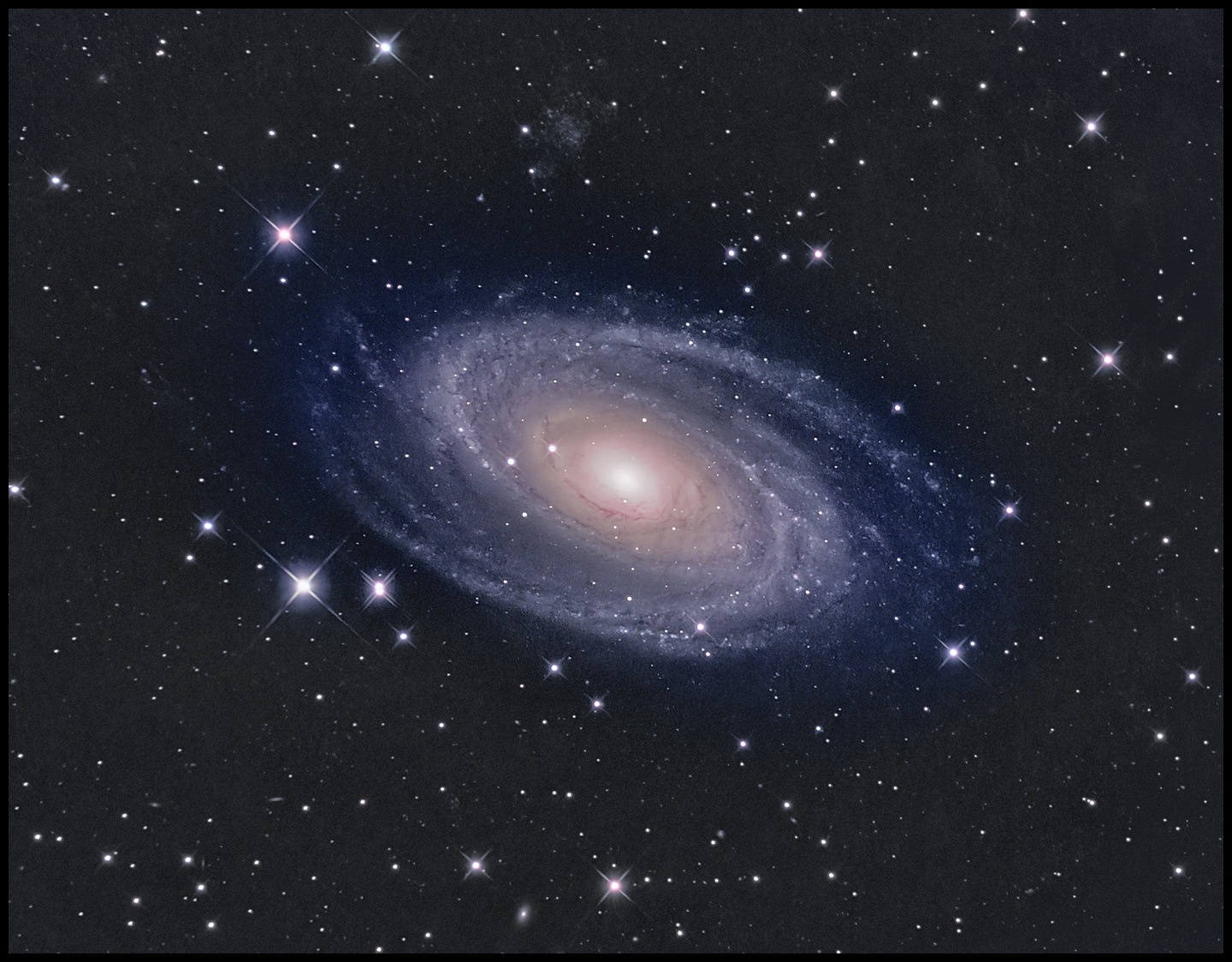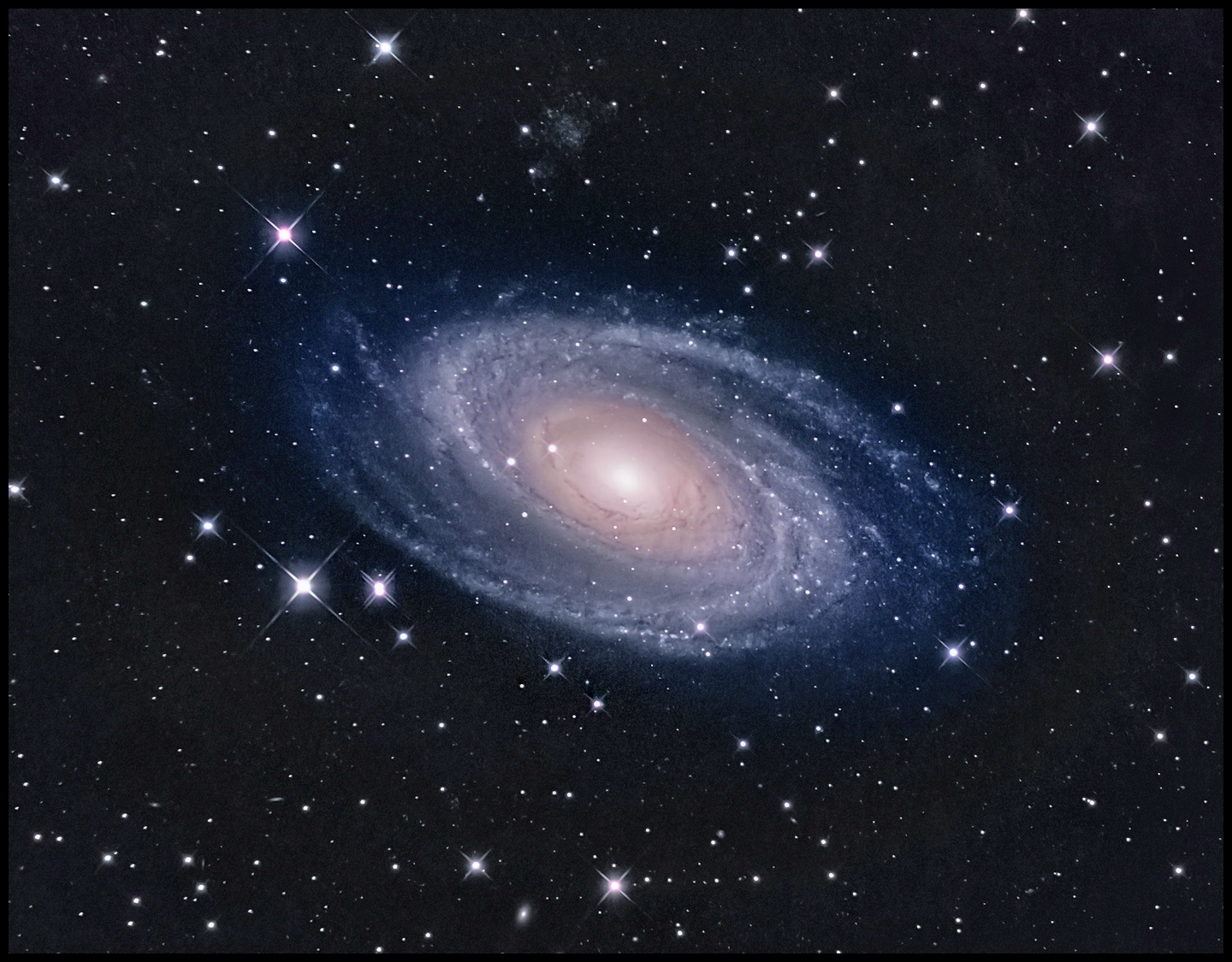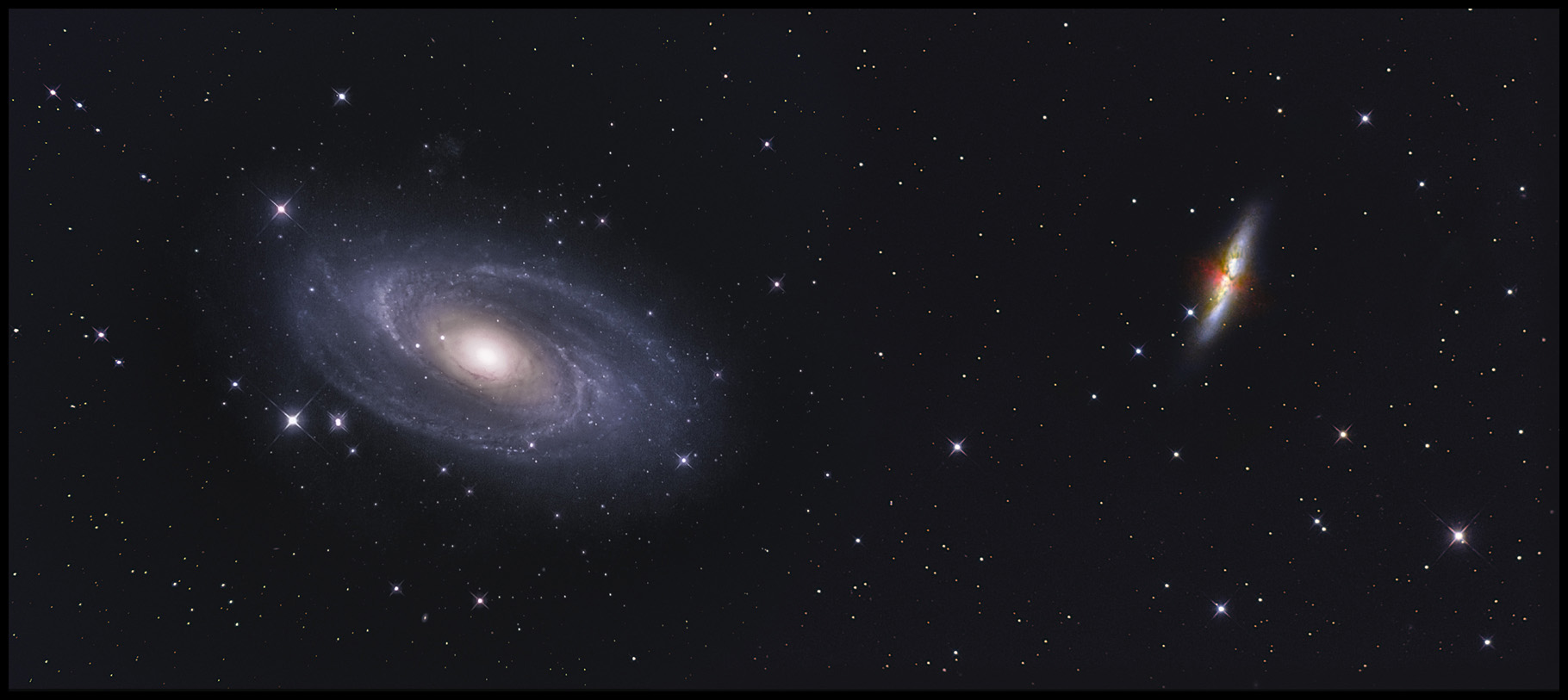Galaxy Season Begins
3/15/2023. In the spring, when M81 emerges from behind Bird Feeder Tree in the middle of the night, galaxy season officially opens in my back yard. This is just 3h33m of luminence data and 15 minutes each in red, green, and blue. First, it can use some calibration frames, flats especially, and (as always) more exposure as the weather allows.

71x180s L, 5x180s R, G, and B
AT10RC @ F5.2 (1330mm EFL)
No calibration.
Clicking is possible, but not particularly rewarding.
I removed a few mm of extension between the AP67 compressor and the sensor to lengthen the EFL a bit. That significantly reduced the vignetting with which I've been coping in the corners. I'm resisting the urge to clean the sensor the day after because I really want to try out the new flatfield panel. The image above has been synthetically flatted, which in this case costs a good bit of detail down in the "shadows."
The next evening, I tried four ways of making a flat. I took 50 frames by (1) using the acrylic diffuser over the aperture under bright twilight; (2) doing the same under dimmer twilight; (3) using an LCD panel over the same two-panel acrylic diffuser; and (4) using an LCD panel by itself. Stretched, the flats look quite different from one another. The dim twilight one looks best. In practice, I don't think they matter all that much. I used the diffused LCD panel flat for this image because it is easy to use that in the field without waiting for dawn or dusk.

Same imaging data as above, but flat-fielded.
This one you 'll want to make big.
There's a newish, v2 Starnet which has the option to work on non-linear data. I installed that module to Pixinsight and used it to produce a starless version of the luminence data. Then I layered that in to punch up the non-stellar bits a bit:

Still the same data as above, now including some starless luminence.
Make it big at will.
It's all a matter of smoothing out faults that would otherwise be obnoxious when the image is aggressively stretched, sharpened, and otherwise pushed.
3/19/2023. You can't shoot M81 without visitting M82. It's a rule. So I did. M82 has about 30 minutes less luminence exposure, but I added 50 minutes of hydrogen-alpha to bring up the huge red filaments apparently emerging from its core. Here's a two-frame panorama of two nights' efforts.

You might as well make it big. You're not going to see much if you don't.
:: top ::
|